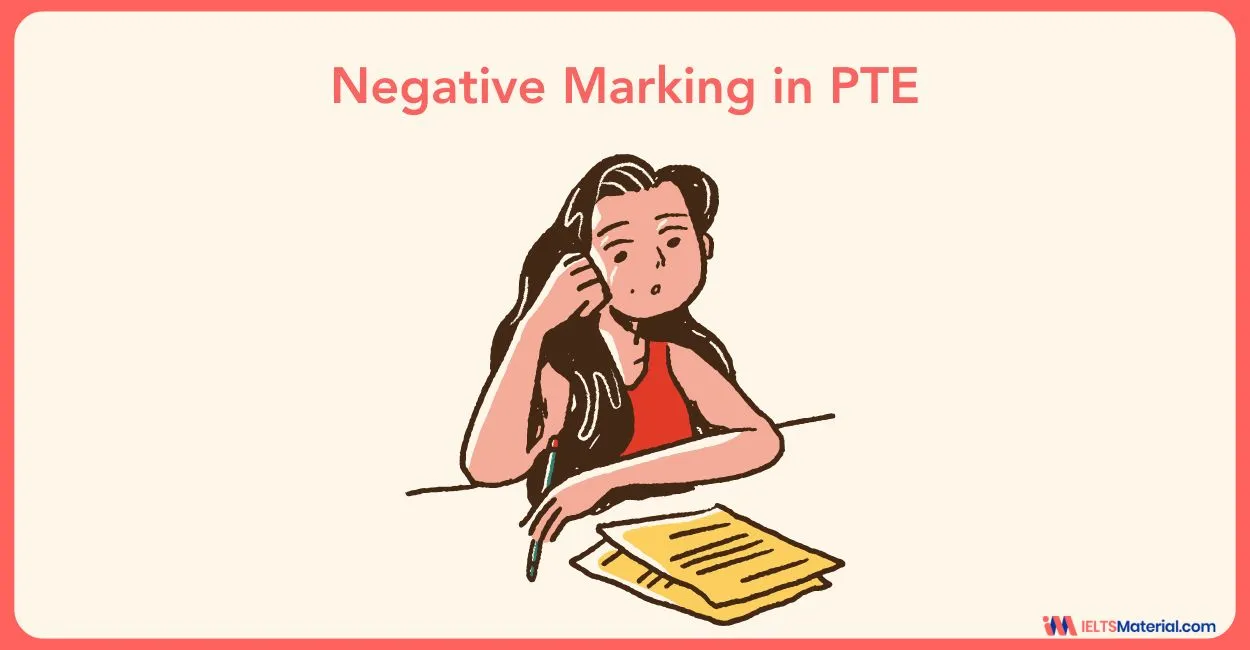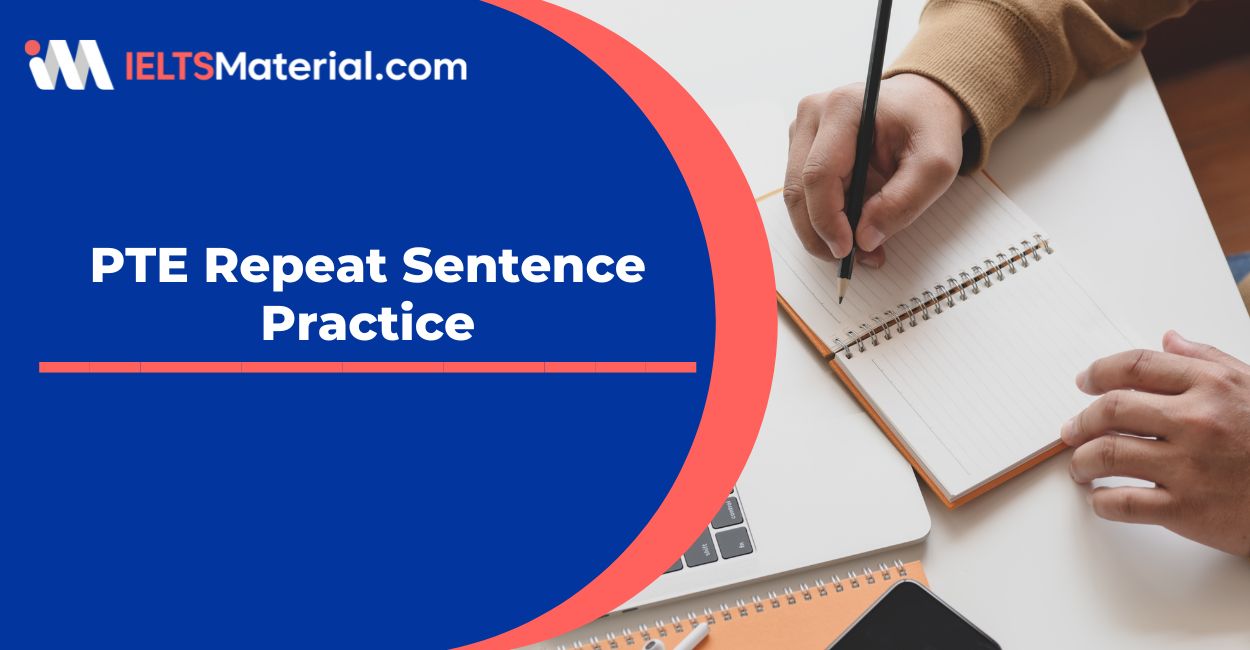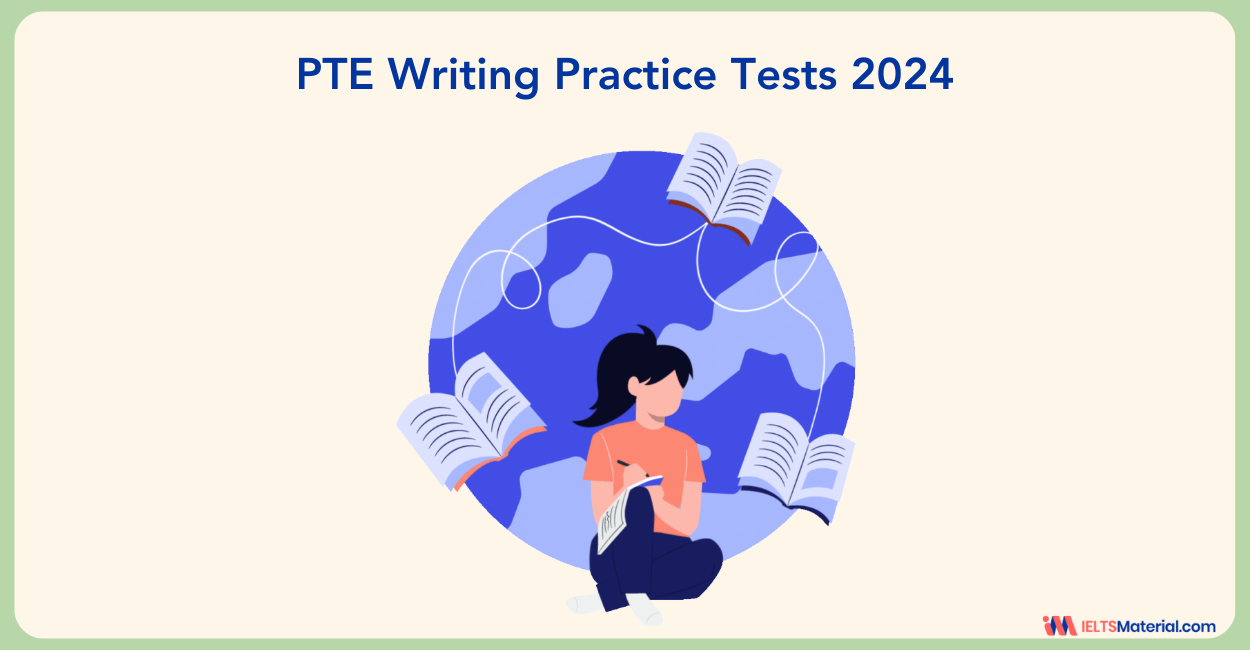PTE Exam Pattern : Listening, Speaking, Writing and Reading
6 min read
Updated On
-
Copy link
Curious to know about the PTE exam pattern? Unlock the secrets of PTE Exam Pattern : Listening, Speaking, Writing and Reading. Dive into the latest updates, tips, and tricks to ace your test.
Table of Contents

Limited-Time Offer : Access a FREE 10-Day IELTS Study Plan!
The Pearson Test of English or the PTE exam as it is popularly known tests the core communication skills of a candidate with regard to the English language similar to other English language proficiency tests. As a result, the PTE Exam Pattern : Speaking, Writing and Reading is one of the most important aspects of the Pearson Test of English that candidates need to be informed about in detail.
Understanding the PTE exam pattern can significantly aid a candidate in their preparation routine. Strategies can be devised for the PTE exam with the knowledge of the pattern of questions included in the test, keeping in mind the strengths and weaknesses of a particular candidate. Although the exam pattern for PTE is quite similar to many of its contemporary counterparts, there are certain characteristic features of this exam that make it unique and extremely preferable to many people looking for reliable and credible English language proficiency tests.
So, let's check out the PTE Exam Pattern : Speaking, Writing and Reading!
Kickstart your PTE preparations now with our experts! Book a FREE Demo!
Overview of the PTE Exam Pattern
To give a brief overview of the PTE exam pattern, the test consists of three segments and each segment focuses on certain communicative skills of the English language. A candidate is assessed on their PTE Speaking, Writing, Reading and Listening skills in the PTE as these are the rudimentary skills of English. Apart from that, the exam pattern for PTE is quite simple and easy to understand, which makes it comparatively less challenging. Also, since PTE is an integrated skills test, more than one language skill is tested in each task type included in the exam.
Several English language proficiency tests are available for potential candidates who wish to migrate to an English-speaking country. The Pearson Test of English or PTE is conducted by Pearson which is one of the leading learning companies globally. This test is designed to assess a candidate’s abilities in the English language in the most comprehensive manner. Accepted by more than 3000 universities, colleges and international organizations, the primary motive of this test is to evaluate whether a candidate is capable of pursuing their higher education in an international environment.
One of the unique qualities of the PTE test is the pattern in which it is administered. Earlier, the duration of the test was three hours. However, after 16th November 2021, it was reduced to a two-hour long computer-based test. Candidates are assessed on the four major communicative skills of the English language. Below is the table which mentions the overview of the PTE Exam.
| Topic | Description |
| Test Time | 2 hours |
| Mode of Exam | Computer Based |
| Scoring Range | 10–90 (based on the Global Scale of English) |
| Skills Tested | Listening, Reading, Speaking, and Writing |
| Result | Usually available within 48 hours |
Since the PTE Exam aims to ascertain whether the candidate is well-versed in real-life English that meets all the global standards and not just the British or American standards of English, PTE Academic is one of the most thorough assessments of an individual’s capabilities when it comes to communication in the English language according to international standards.
Grab the PTE Workbook | Academic Actual Tests eBook and work towards success!
PTE Exam: Speaking and Writing
In this section, a candidate’s speaking and writing skills in the English language are evaluated by a series of questions. There are 8 question types in this section, including Personal Introduction, Read Aloud, Answer Short Questions, Write Essay and others. The time allotted for this section is 54-67 minutes.
Further details about the Speaking and PTE Writing Section is provided below.
| PTE Speaking and Writing Question Types | Number of Questions | Duration Per Question |
|---|---|---|
| Personal introduction | 1 | Total Time: 54 – 67 minutes |
| Read Aloud | 6 – 7 | |
| Repeat sentence | 10 – 12 | |
| Describe image | 3 – 4 | |
| Retell lecture | 1 – 2 | |
| Answer short question | 5 – 6 | |
| Summarize written text | 1 – 2 | |
| Write Essay | 1 – 2 | |
| Total Questions | 28 – 36 |
PTE Exam: Reading
In this section, the reading skills of a candidate are assessed and their capabilities in evaluating and choosing the most suitable option are also checked. There are 5 question types in this section and the total time allotted is 29-30 minutes.
Some important details about the PTE Academic Reading section are given below.
|
PTE Reading Question Types |
Number of Questions |
Duration Per Question |
|---|---|---|
| Fill in the Blanks – Reading & Writing | 5 – 6 | Total Time: 29 – 30 minutes |
| Multiple Choice, Multiple Answers | 1 – 2 | |
| Re-order Paragraph | 2 – 3 | |
| Fill in the Blanks – Reading | 4 – 5 | |
| Multiple Choice, Single Answer | 1 – 2 | |
| Total Questions | 13 – 18 |
PTE Exam: Listening
In this section, a candidate is evaluated based on his/her listening skills and how well they can understand the variety of English accents that are present in the audio extracts. There are 8 question types in this section and the total time allotted is 30-43 minutes.
Here are a few details regarding the PTE Listening Format of the PTE exam:
| PTE Listening Question Types |
Number of Questions |
Duration Per Question |
|---|---|---|
| Summarize Spoken Text | 1 – 2 | Total Time: 30 – 43 minutes |
| Multiple Choice, Multiple Answers | 1 – 2 | |
| Fill in the Blanks | 2 – 3 | |
| Highlight Correct Summary | 1 – 2 | |
| Multiple Choice, Single Answer | 1 – 2 | |
| Select Missing Words | 1 – 2 | |
| Highlight Incorrect Words | 2 – 3 | |
| Write from Dictation | 3 – 4 | |
| Total Questions | 12 – 20 |
It is consequential for a student to be well-informed about how an examination is conducted to customize their preparation plan. When students know the PTE exam pattern well, they can identify their requirements and prepare accordingly to achieve their desired results and come one step closer to their ambition of travelling abroad and pursuing further studies.
Grab the opportunity to enroll yourself in the Best Pearson Test of English (PTE) For 2025!
Strategies to Prepare for PTE Exam Pattern : Listening, Speaking, Writing and Reading
Studying for the PTE Academic exam requires more than just an excellent knowledge of the English language but it requires a good strategy, working practice, and a clear and thorough knowledge of the format of the exam. The test is designed to reflect actual use of the language and one may often focus on two or more skills simultaneously. Below is the strategies in order to prepare for PTE Exam Pattern.
- Practice with a microphone to simulate actual test conditions, focusing on clarity not speed-speak at a normal pace.
- Divide the sentence into chunks with slight pauses at commas and full stops. Use the shadowing technique and repeat the sentence right after hearing it.
- Improve pronunciation by recording your responses and doing a self-assessment of your fluency and pronunciation. That means no more than 200-300 words but don't use many fancy words unless you are quite confident. Practice your typing to improve speed and accuracy.
- Practice skimming for the gist and scanning for details. Build reading stamina by regularly reading news articles, academic journals, or blogs.
- Practice timed reading exercises to build speed without giving accuracy a miss.
- Note-taking must be improved for Summarize Spoken Text, with shorthand being an option. Focus on ideas, rather than every single word.
- Train your ears via transcription exercises: Listen to a brief recording, then write down everything you hear word-for-word.
- Practice using a microphone to create test conditions as realistic as possible, concentrating on clarity instead of speed-speak at a normal pace.
Understanding the PTE exam pattern is your initial step toward attaining that score you want. Each module for the PTE Exam Pattern : Listening, Speaking, Writing and Reading is designed to evaluate various aspects of real-world communication in English. When you become familiar with the task types, duration, and scoring scheme, you can enter into the exam confidently and strategically. Smart training, keeping focus, and then moving forward toward your international ambitions with PTE Academic are some of the things you have to do from here onward.
Also check :
Frequently Asked Questions
How many sections are there in the PTE exam?
How many questions types are in each section of PTE?
What is the order of questions in PTE?
Which is the toughest section in PTE?
What is the new pattern of the PTE exam?
Other PTE Exam Related Articles

Start Preparing for IELTS: Get Your 10-Day Study Plan Today!
Recent Articles

Kasturika Samanta

Kasturika Samanta

Kasturika Samanta

Prity Mallick




Post your Comments